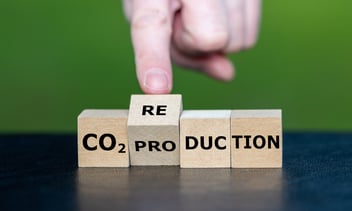Transitioning to net zero equitably

The world is undergoing one of the greatest energy transitions since the start of the industrial age as we continue to move from coal and fossil fuels to clean energy.
And a major part of this shift from traditional energy sources to lower-emissions energy, like renewables and hydrogen, is also the goal for many countries to reach net-zero emissions by 2050.
As this transition progresses, many have raised concerns that developed countries have done little to help ensure a sustainable transition for all, which will only worsen global poverty and people’s lack of access to resources such as water or energy itself.
“Demands for net-zero emissions for all countries by 2050 will exacerbate further the existing inequities between developed and developing countries,” a conglomeration of developing countries stated during COP26.
They dubbed calls for all countries to meet net-zero emissions by 2050 “anti-equity and against climate justice”.
The net-zero transition will change how and where water is used for energy generation, from cracking water through electrolysis for hydrogen creation, in crucial battery manufacturing, diverting or holding back for hydroelectricity, or via energy recovery from anaerobic digestion of wastewater.
With water being used elsewhere in new and different processes as part of decarbonisation efforts, it could mean not all people will retain the same access to water, thereby introducing or perpetuating divisions.
But, with the right steps, could the water community’s energy transition avoid introducing or deepening inequalities?
Net zero water
A recent report by Australia’s Monash University and the Royal Holloway University of London, titled Just Transitions, highlighted that Australia is yet to come to terms with the full future impacts of an energy transition.
It examined how a nation could shape decarbonisation in a way that is both “ecologically sound and socially just”.
The study called the transformation a complex development, noting a just transition could not simply follow a recipe for success due to Australia’s unique challenges, adding “the conversation has become controversial to the point where even talking about ‘just transitions’ can be critically received”.
The study said an approach needs to put people as well as the environment at the forefront of this change, but what does this look like when it comes to water usage, access and conservation during the energy transition?
Lisa Zembrodt, Principal and Senior Director of Schneider Electric’s Sustainability Business, painted a worrying picture of uneven access to water and potential scarcity if the energy transition is not carried out with total sustainability.
“The energy transition will increase demand for water. When it comes to any transition involving natural resources, we must always consider equity, and a whole-of-system approach is needed from the planning stage,” Zembrodt said.
“To be sustainable, it’s essential we consider not just the carbon impact, but the water impact, as the two are linked, and efficiency of one cannot be achieved without increased efficiency of the other.”
Zembrodt said a whole-of-system approach is critical to ensure enough water is available for people and processes.
“Water scarcity and access will only become more complicated as the energy transition accelerates,” she said, adding that it shouldn’t slow the transition and global decarbonisation, as climate change itself is already accelerating water scarcity issues.
“There must be enough usable water available to support all the activities we aim to undertake.
Zembrodt said a net-zero water approach that only allows development projects to go ahead if they have a cumulative net-zero impact on water is one way to reduce the risk of negative outcomes for end-users at a consumer and industrial level, and for water suppliers during this transition phase.
“Corporations are already feeling pressure from investors and society to improve their water strategies, and collaboration and partnerships are key to solving these problems,” she said.
“Water users should also be looking to understand their current water usage and long-term needs, set a sustainable water strategy, and make progress towards targets to achieve the strategy in terms of resilience, security, waste, pollution and ecosystem impact.”
Using improved water sourcing practices, localised treatment and water-use optimisation techniques can also help reduce the risk of running out of usable water.
In terms of the role water utilities are able to play in socially and environmentally equitable transitions to net zero, Urban Utilities Futures Specialist Glen Taylor said the growing demand due to increasing populations adds an extra challenge – and one that must be addressed now.
“As Queensland’s largest water service provider, we have a direct impact on many important issues like water security, liveability, circular economy, biodiversity, water cycle changes and other key community challenges.
The decisions we make today set us up for the future we want to have,” he said. “Our communities trust us to do the right thing by them, and achieving net zero in a clear, cost effective and efficient way is the right thing to do.
“Our net-zero roadmap outlines the path we’ll take to reduce our greenhouse gas emissions and embrace 100% renewable energy in the most effective, cost-efficient way to ensure we maximise benefits for customers, environment and community.”
Included in Urban Utilities’ net-zero roadmap is a continued dedication to improving energy efficiency, increasing renewable energy generation on site, investing in local offset projects and including recycled water in the supply mix.
Despite increasing populations, Taylor said, water and wastewater service providers are well positioned to tackle net-zero equitably by embracing the circular economy, while keeping customers and the environment front of mind.
“As a water utility, we’re in a unique position in that we can produce our own renewable power through wastewater treatment,” he said.
“Renewable energy isn’t the only valuable resource being created through the treatment process; we’re also supplying recycled water from key wastewater treatment plants to help increase water security for customers. Recycled water supports a circular economy to ensure we get more than one use out of precious resources.”
Systems of change
To ensure communities are not left worse off, the concept of a ‘just transition’ must be explored, Australian National University Institute of Water Futures Associate Professor Katherine Daniell said, especially when it comes to water.
“All transitions have the potential to change the structure of society and thus to either deepen or lessen inequality. If the energy transition isn’t designed and governed effectively, then we can see that certain inequalities will play out, including between genders, urban and rural, high and low socioeconomic status, and even natural resources or not,” she said.
When it comes to water, society’s strong focus on decarbonisation could cause an imbalance in the transition that puts resources like water at risk.
“We need to go beyond just focusing on carbon and technologies, and think about the broader social and environmental systems these surface and groundwater systems, people in communities, what indicators and values they care about, and how these transitions might play out for them,” Daniell said.
“If society overly focuses on one indicator for the environment, like carbon, we risk downplaying other key indicators of environmental and societal health and wellbeing, such as water use, as well as potentially creating other damage or unintended consequences through particular choices of energy production.”
Daniell said each energy system uses water differently and requires different resources.
“Such as minerals for batteries, cement for dams, water for cooling or energy system production. These things will impact water systems differently through pollution or benefits”.
Daniell said there is no single solution to mitigating these risks, and with any major change there will always be trade-offs, but support for a just transition rests in part on being both socially and politically important. The focus is currently on decarbonisation to the disservice of other factors.
“We are far from a pandemic level global response to working together,” she said.
“And much of that is likely to do with people currently feeling like the costs and gains will be too unevenly distributed, and interests in specific indicators and technologies don’t positively capture their imaginations and their will to change.
“We’re going to need engaging and inclusive stories, data, to move the world forward.”
While the world continues to tread a new path in the energy transition, a comprehensive resource-usage point of view must be taken. And in the search for net-zero emissions, a net-zero water loss approach must ensure that a sustainable transition occurs that can benefit all people equally.
First published as ‘Equitable Transitions’ in Current 2023.



